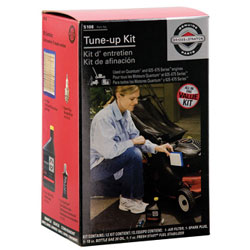How to Clean a Small Engine Carburetor
A big part of ensuring a smooth-running engine is keeping your carburetor and linkages clean and well adjusted.
![]() WARNING: Always read the engine and equipment manual(s) before starting, operating, or servicing your engine or equipment to avoid personal injury or property damage. See an authorized dealer or contact Briggs & Stratton if you are unsure of any procedure or have additional questions. Find all Engine Safety Warnings
WARNING: Always read the engine and equipment manual(s) before starting, operating, or servicing your engine or equipment to avoid personal injury or property damage. See an authorized dealer or contact Briggs & Stratton if you are unsure of any procedure or have additional questions. Find all Engine Safety Warnings
Step 1: Check the Air Filter
Make sure that the air coming into the carburetor is clean and free of debris by inspecting the air filter. A clogged air filter is a common cause for black smoke emitting from the exhaust.
Step 2: Check the Linkages
Linkages attached to the carburetor's throttle and choke plates can bind or stick when dirty. Constant vibration and wear can affect the setting of the carburetor's mixture screws (if equipped).
Step 3: Use carburetor cleaner to remove deposits, clogs & debris

With all of the grass, twigs and other debris that a small engine encounters, it's not surprising that even passages inside the carburetor eventually pay a price. Deposits inside the carburetor can clog fuel and air passages and reduce performance or stop the engine altogether.
Small Engine Carburetor CleanerLuckily, you can take care of many of these problems quickly and easily; often without even removing the carburetor from the engine. Commercially available carburetor cleaner comes in convenient spray cans for periodic cleaning of both inside and outside the carburetor.
In addition to cleaning the carburetor, many engine performance problems can be linked to maintenance issues such as stale fuel, dirty air filter, fouled spark plug, and deteriorated oil. A great way to help avoid these problems would be to perform an annual tune-up using a Briggs & Stratton Small Engine Tune-up Kit.




